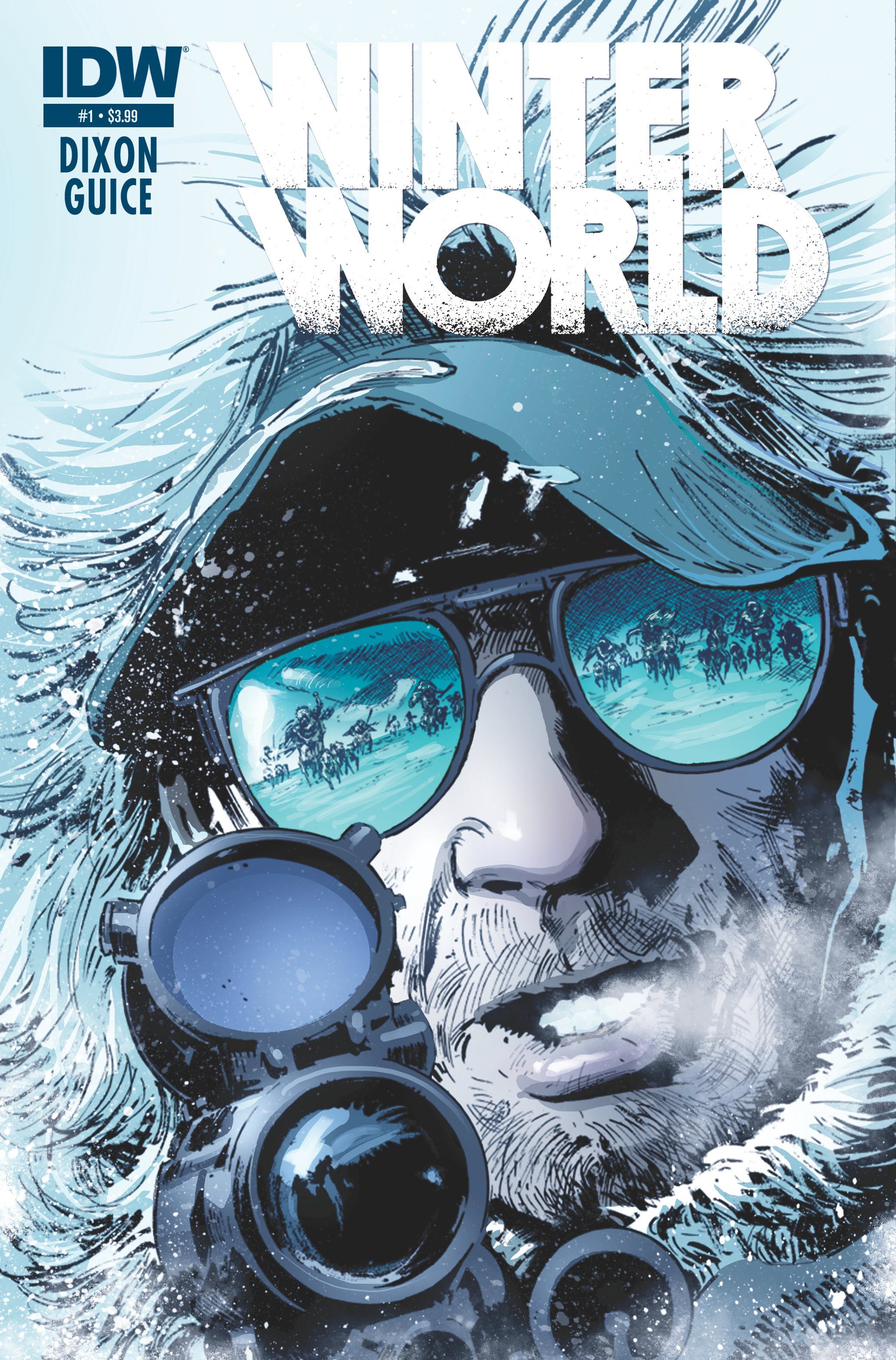After the harsh winter all-too-recently endured in the United States, it seems way too soon to be thinking about snow and ice again, but "Winterworld" #1 by Chuck Dixon and Butch Guice leaps into the cold headfirst, hitting the readers with a blast of Arctic air.
Dixon is known for his concise, direct writing that wastes little time. "Winterworld" #1 introduces Scully, an older, seasoned grumpy guy, who has taken Wynn, a fourteen-year-old girl under his care. The pair is an odd coupling, but they bounce off one another nicely, like a worldly-wise older brother and his naive little sister. Also along for the ride is Rah-Rah, their pet badger. Dixon gives readers just enough of the characters to make them familiar and provides a couple little quirks along the way, such as Scully's preference to sing along with Bob Marley music and Wynn's ferocious passion for books. Dixon doesn't smash endless reams of detail over the readers' heads, choosing to leave well enough alone and move things forward.
Like his writing collaborator on "Winterworld" #1, Butch Guice has a fine knack for choosing what details to add in and what minutiae to leave aside. It's evident that Guice's art is as meticulous as ever. Yes, a snowy landscape is probably the easiest thing for an artist to draw in theory, but Guice proves otherwise in this book, making the landscape as real and harsh as Dixon's story calls for. In "Winterworld" #1, wolves look like wolves, not indiscriminate generic members of the Canis genus. The vehicles Wynn and Scully utilize are worn down and at least partially salvaged, also displaying the severity of the surroundings. Diego Rodriguez's colors are filled with blues, cooling Guice's artwork and making the story downright chilly. When the adventure moves indoors Rodriguez warms up the palette a bit, stretching into purple and violet, but never letting the temperature warm up too much. Dixon's story is economic in its wording, which plays nicely to Robbie Robbins' letters and gives "Winterworld" #1 an opportunity to congeal as a true creative partnership between all parties.
Part "The Day After Tomorrow" and part "Road Warrior," the issue blends those concepts and sprinkles in a liberal amount of humanity. By the end of "Winterworld" #1, readers have learned very little about the characters and their drives, but Dixon wagers readers will care about Scully and Wynn if he presents more of their personality than their motivations. He's exactly right. "Winterworld" #1 is a nice divergence from superhero comics, giving readers a not-too-subtle reminder that winter is, indeed, coming.

